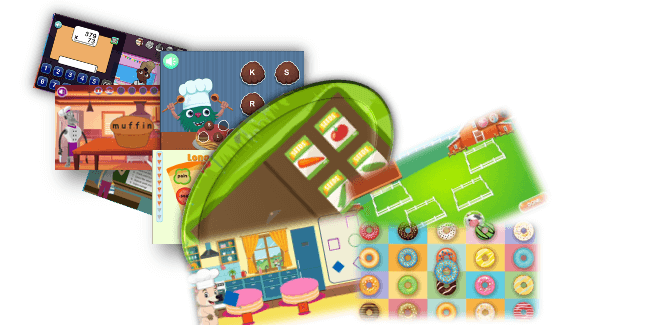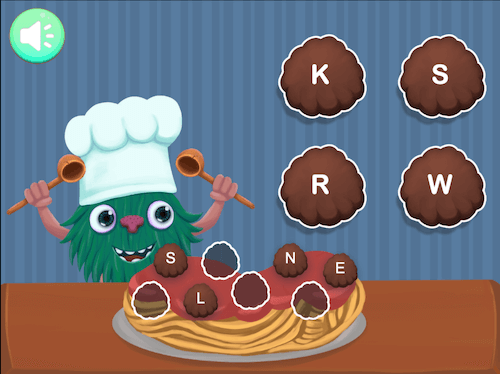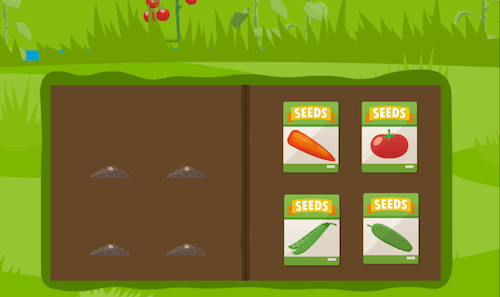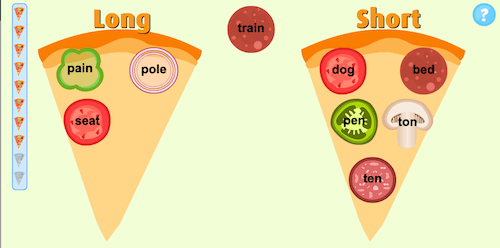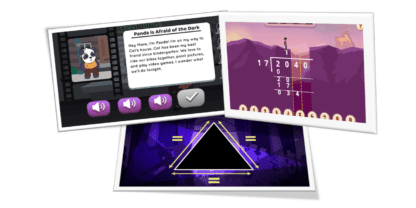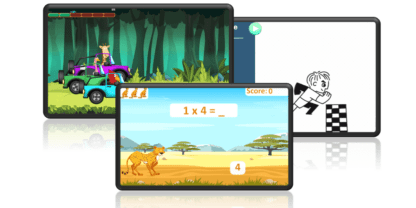It’s November, and that means it’s time to roll the clocks back, dig out the cardigans, and reflect on what we’re most thankful for. It also means a little time off to recharge the batteries and (for many of us) a chance to indulge in a feast or two of epic proportions and other Thanksgiving activities.
In keeping with that theme, we’ve scoured the many Quests of eSpark for some culinary content to satisfy even the most devoted foodies. These activities are sorted by grade level, so feel free to skip ahead in the meal if your students have graduated from the kiddie table.
Course 1: Donuts
Kindergarten Math – Counting 1-20 at the Bakery
A little something sweet to set the tone for our food-filled day. Glazed, sprinkled, powdered… You name it, we’ve got it. In this tasty tune, students will learn how to count to 20, including counting objects (people and donuts) in a rectangular array.
Current eSparkers: click here for the Small Group Skill
Course 2: Meatballs
Kindergarten Reading – Meatball Madness
Meatballs are one of the more flexible protein sources out there. You can enjoy them as an appetizer (like we’ve done here) or add them to an entree for a little extra zing. In this game, students match spoken letters to their uppercase print counterparts while our excited little green chef waits rather impatiently to dig in.
Current eSparkers: Click here for the Small Group Skill
Course 3: Cake and Cookies
1st Grade Math – Priscilla’s Shape Bakery
Listen, it’s easy to sit over there and be judgmental about the decision to promote Priscilla’s bakery this early in the meal, but don’t knock it ‘til you try it—cake and cookies are an excellent palate cleanser under the right circumstances. In this game, students sort shapes based on defining attributes.
Current eSparkers: Click here for the Small Group Skill
Course 4: Meal Prep
1st Grade Reading – Syllable Slicer
Ok, we’ll concede that meal prep is not a “course,” but you can argue that it makes sense as an interlude between an overly indulgent morning and the feast to come. The food doesn’t make itself. This will be a familiar concept to the Fruit Ninja fans out there—students decode two-syllable words by slicing various foods in just the right place to achieve syllabic symmetry.
Current eSparkers: Click here for the Small Group Skill
Course 5: Locally Sourced Vegetables
2nd Grade Math – Grow a Garden
From garden to table, these veggies provide a much-needed nutritional boost to our meal. This geometry challenge sees our young heroes dividing up a garden to plant their choice of produce. It’s a nutrient-rich way to practice partitioning rectangles into two, three, or four equal shares.
Current eSparkers: Click here for the Small Group Skill
Course 6: Pizza
2nd Grade Reading – Pizza Sort
Thin crust or deep-dish, Chicago or Detroit, supreme or plain… With so many options on the table, homemade pizza makes for a versatile addition to any feast. Some of your pickier students may not appreciate all the ingredients they’re adding to their pizzas, but the ability to distinguish long and short vowels in regularly spelled one-syllable words is an important slice of the phonics pie.
Current eSparkers: This game is currently only available in the foundational reading Quest or by following the direct link above. Click here for the relevant Small Group Skill featuring a different activity.
Course 7: Farm-Fresh Proteins
3rd Grade Math – Farmer Albert Eggstein
We know, we know… This is a bit of a stretch, but we don’t get eggs without the chickens, cheese without the cows, or bacon without the…well, let’s not think about that right now. In this game, students will learn how to interpret products of whole numbers by counting objects in groups.
Current eSparkers: Click here for the Small Group Skill
Course 8: Pancakes
4th Grade Reading – Events, Procedures, Ideas, and Concepts in Text
That’s right—turkey and pancakes are the next logical evolution of chicken and waffles. This video will help students understand how to identify and interpret events, procedures, ideas, and concepts in a text. It’s also the first of our courses to feature an actual recipe with ingredients and instructions—truly a life skill worth mastering.
Current eSparkers: This video is currently only available in the 4th grade Reading Informational Quest or via our YouTube channel. Click here for the relevant Small Group Skill featuring a different video.
Course 9: Cupcakes
5th Grade Math – Cupcake Shop
As our feast comes to a close and our stomachs (and minds) expand to unsustainable levels, it’s high time to find room for another round of dessert. Maya runs one of the most popular cupcake shops on the block, and she loves giving students the opportunity to put together her not-so-secret recipe while multiplying multi-digit whole numbers using the standard algorithm.
Current eSparkers: Click here for the Small Group Skill
Food for thought
And with that, it’s time to put up the stop sign, take a nap, and start thinking about how much we’ve learned since we began this feast. We hope you’ve enjoyed this sampling of the eSpark content cornucopia.
Remember, the thing that sets eSpark apart from other supplemental instruction programs is our holistic, play-to-learn approach. Students encounter a wide variety of videos, songs, games, and other activities as they learn, practice, and master their math and reading standards—a welcome change from the traditional dry instruction > multiple choice/drag-and-drop > test approach. Teachers can sign up for free using the link at the top of the page.
